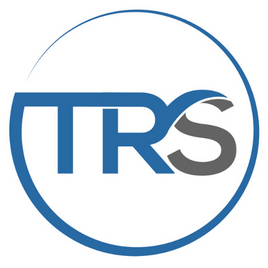Labour Force Insights 2022
Labour Force Insights 2022 The Australian labour force has been in turmoil since early 2020 when the Covid-19 pandemic arrived. Now, 2 years on, the latest figures from the Australian Bureau of Statistics and data from the census 2021 show a recovery in jobs and unemployment. The varying impact of the pandemic on different industries…

Labour Force Insights 2022
The Australian labour force has been in turmoil since early 2020 when the Covid-19 pandemic arrived. Now, 2 years on, the latest figures from the Australian Bureau of Statistics and data from the census 2021 show a recovery in jobs and unemployment.
The varying impact of the pandemic on different industries has been evident. Many people lost work in 2020 and 2021 during covid lockdowns and restrictions that forced hospitality, retail and arts venues to close. Others were able to work from home during lockdowns, while others still used the time to reevaluate their life goals and career ambitions (prompting what some have labelled ‘The Great Resignation’).
The unemployment rate across Australia has now recovered to pre-pandemic levels. There has also been a rise in the number of job openings across the country. But what’s lurking behind these numbers? The pandemic has shifted Australia’s employment landscape, and to understand it we also need to explore underemployment and ‘job attachment’.
At TRS Resourcing, we specialise in finding jobs for skilled workers with some of Australia’s most trusted and innovative businesses. With the latest ABS figures for January 2022, we’ll take a deep dive into Australia’s labour force and unpack the story behind the numbers.
Who makes up Australia’s labour force?
Not all Australians are counted when unemployment figures are calculated. The portion of Australia’s population who are able to work are the labour force. Millions of Australians are not included in the labour force, such as children, pensioners and those with a disability that precludes them from working.
Of those who can work, in January 2022 there were:
- 13,255,000 people employed
- 580,000 unemployed
out of Australia’s population of over 25 million people.

Did you know?
In January 2022:
- 1,659 million hours monthly hours worked in all jobs
- 9,077,300 employed full-time
- 4,177,600 employed part-time
- 63.4% employed-to-population ratio
- 70.4% participation rate for men, 62.1% for women
Note: this is the seasonally adjusted data provided by the ABS, and can be found on the ABS website here.
Unemployment, Underemployment and Job Attachment
The unemployment rate across Australia remains at a 13-year low of 4.2%.
But there’s a new term that’s becoming even more relevant – underemployment. An underemployed person is someone who is employed but working low hours (for example a part time employee or a casual working 10 hours at a bar each weekend). Many casual jobs don’t offer full time work hours (full time employment usually involves around 38 hours a week).
There are many reasons this may occur – the person is studying, their employer won’t offer more hours, or they are working several jobs. They may need to supplement this work with other income such as government payments in order to make ends meet.
Hours worked decreased in January

The labour market took a hit in January 2022, with a larger fall in hours worked than usual. The reduced number of hours worked reflects the impacts of the Omicron variant on the labour force (especially on Australia’s east coast). This was due to a high number of people with an illness or on sick leave, or in their 7 day covid isolation period.
The number of people taking time off in January 2022 due to illness, sick leave or injury was over double the number in January 2019 and 2020. There was also a high number of people taking annual leave or working reduced or no hours due to economic and other reasons as measured by the ABS.
What is job attachment?
Job attachment refers to a job someone is connected to where they may not actually be working. Someone could be attached to a job without working for an extended period for many reasons, including: a job they have secured but haven’t started yet, a job they are taking extended leave from, or (commonly in 2020 and 2021) a job that they receive zero hours for because the business is unable to operate during covid restrictions.
As Australia moves past the period of frequent lockdowns and removes restrictions, the number of people who are not employed but attached to a job is decreasing. This is a promising sign that more jobs are available and people are getting back to work where they can.
Unemployment by State

The seasonally adjusted unemployment figures for each Australian state and territory in January 2022 were:
- 4.2% in New South Wales
- 4.1% in Victoria
- 4.4% in Queensland
- 4.8% in South Australia
- 3.7% in Western Australia
- 3.8% in Tasmania
- 3.8% in Northern Territory
- 3.2% in Australian Capital Territory
Average Salary Australia 2022
ABS jobs data from November 2021 recorded the average weekly earnings for full time employees at $1,748 (up 2.1% over the year). What were the popular jobs in Australia and which jobs have the highest salaries? In 2022, wage growth is expected to remain steady as Australia emerges from the pandemic.
The highest-earning workers were in these industries:
- Mining, $2,656 per week
- Information media and telecommunications, $2,178 per week
- Financial and insurance services, $2,116 per week
While the lowest paid workers were in these industries:
- Accomodation and food services, $1,219 per week
- Retail trade, $1,314 per week
Many jobs in these highest paid industries are currently in high demand, especially mining workers such as truck drivers, boilermaker welders, engineers and engineering technologists, and electrical engineering draftspersons.

Find a job today
As one of the leading Recruitment Agencies in Melbourne and Perth, TRS Resourcing can help you land the next big role in your career. We have access to job openings within many thriving Australian businesses as well as free online job seeker resources.
With our expertise in labour hire in Melbourne and Perth, we help job seekers land roles daily – whether it’s the next job in a long career or getting their foot in the door in a new industry.
Find a job today by viewing our Jobs page or signing up for Job Alerts with TRS Resourcing’s recruitment agency online!
No CV? No problem! Access our free CV generator here.
Contact TRS
To speak with TRS Labour Hire Recruitment Consultants, please contact the following offices:
Labour Hire Melbourne 03 9917 3545
Labour Hire Perth 08 6205 3570

You can read more about the Recruitment Industry and learn more insights from the team at TRS Resourcing. From guidance and encouragement to job seekers to support for Australian business owners – we’ve got you covered.
